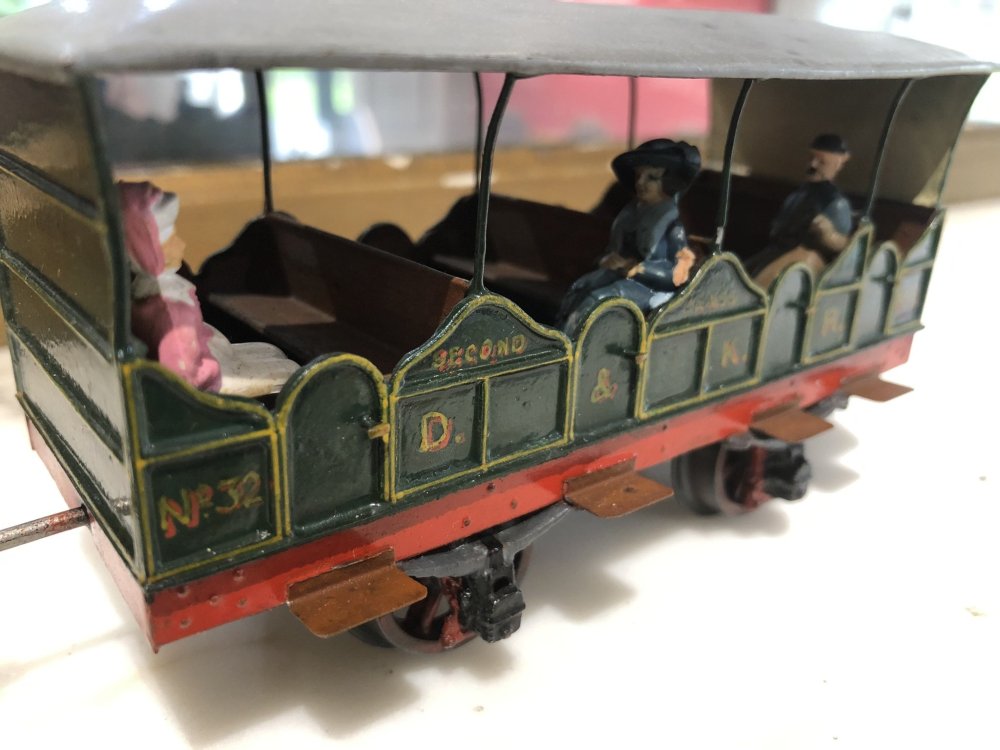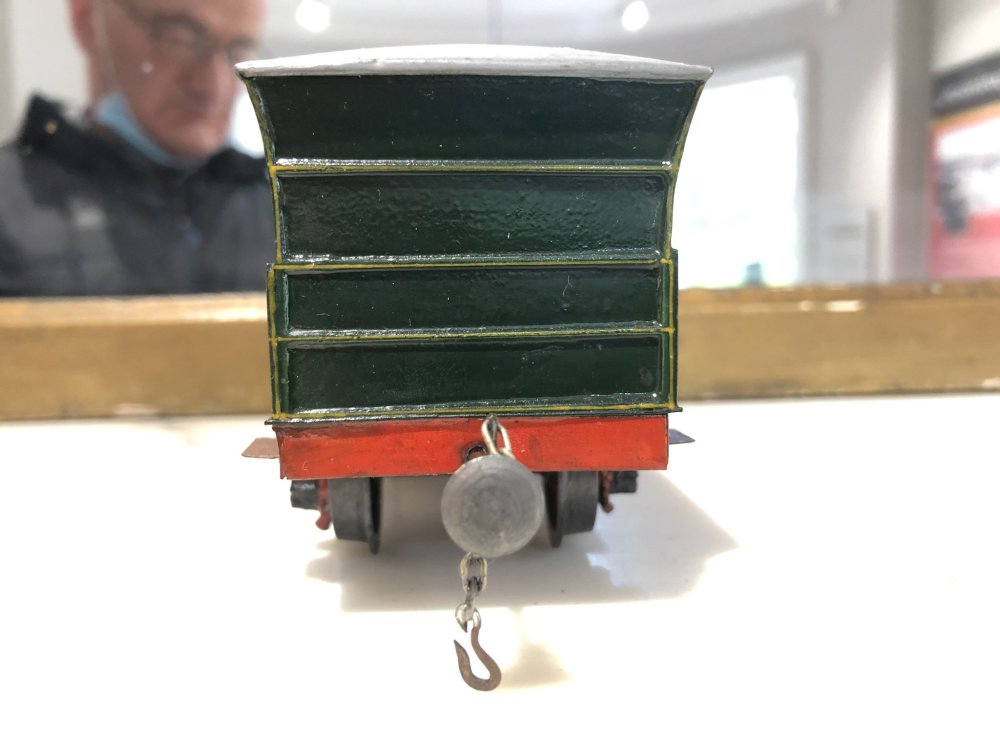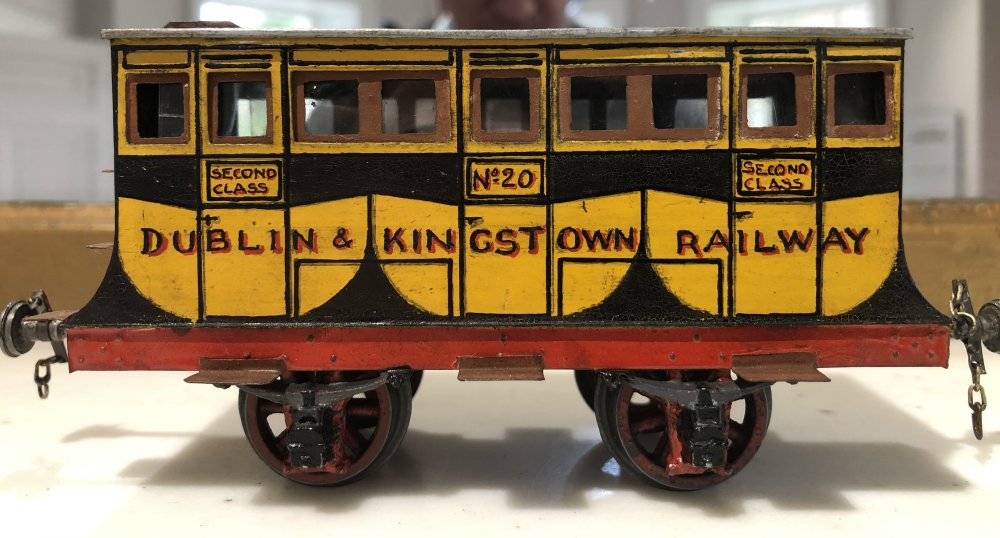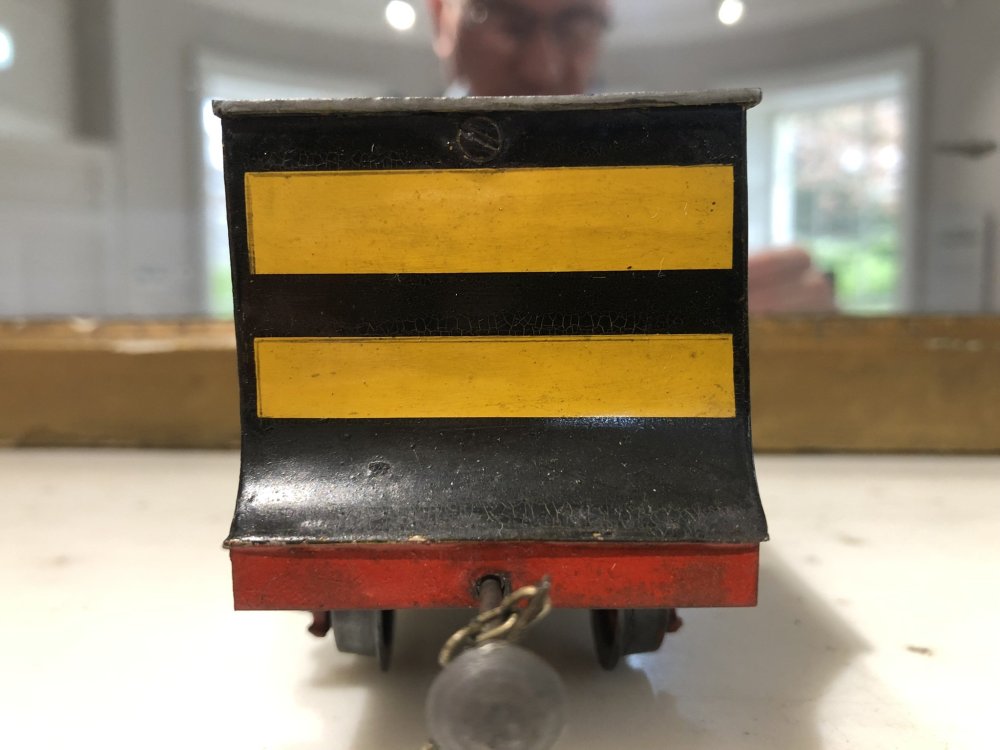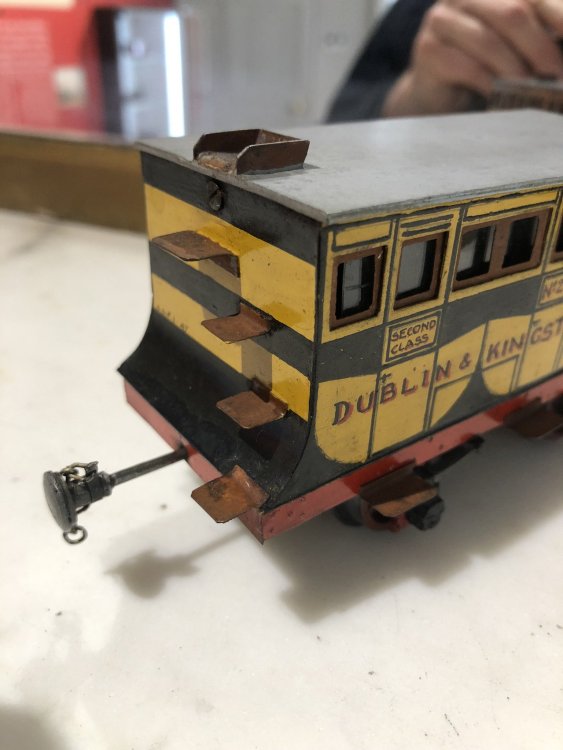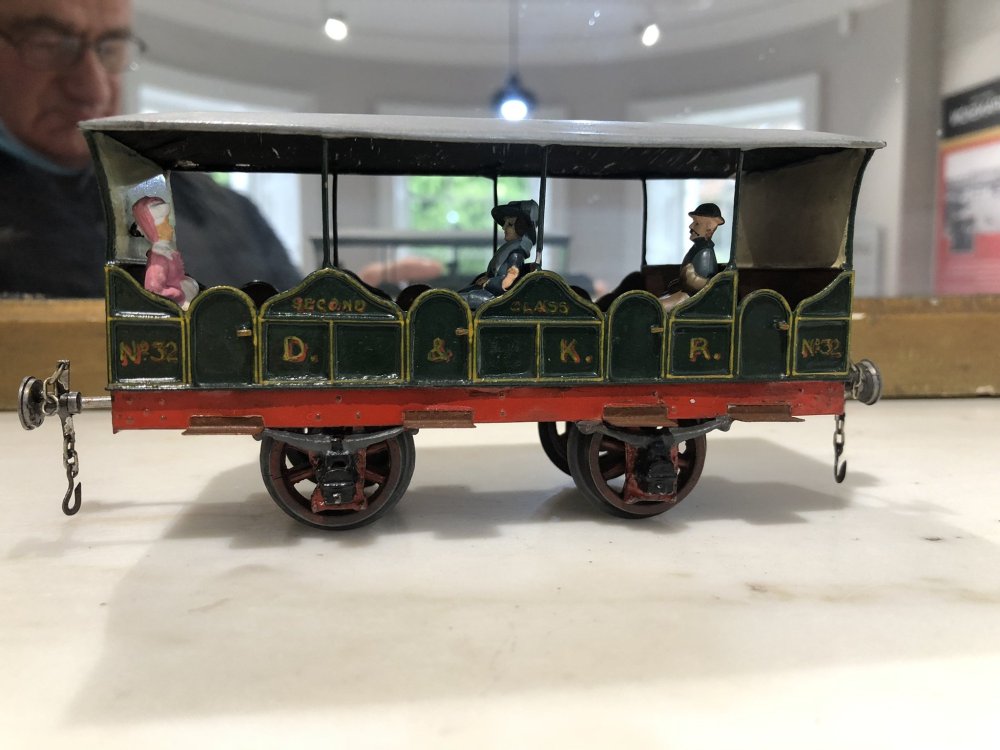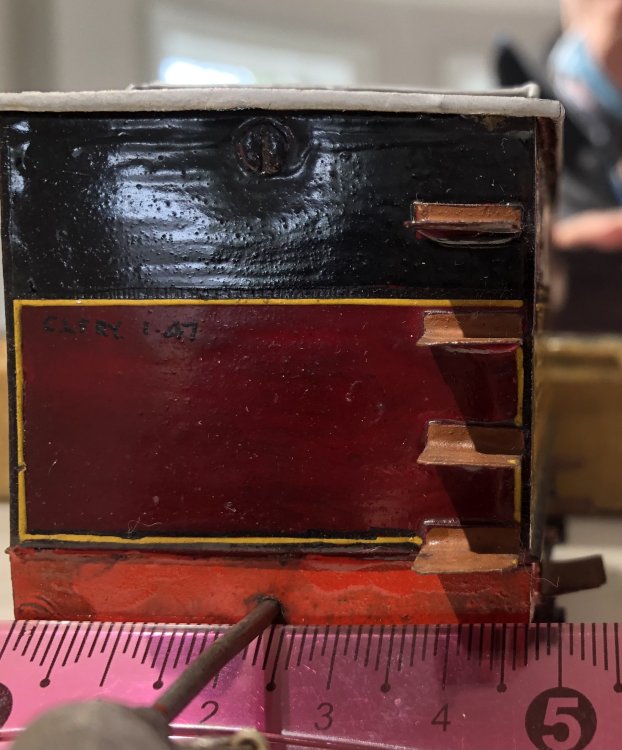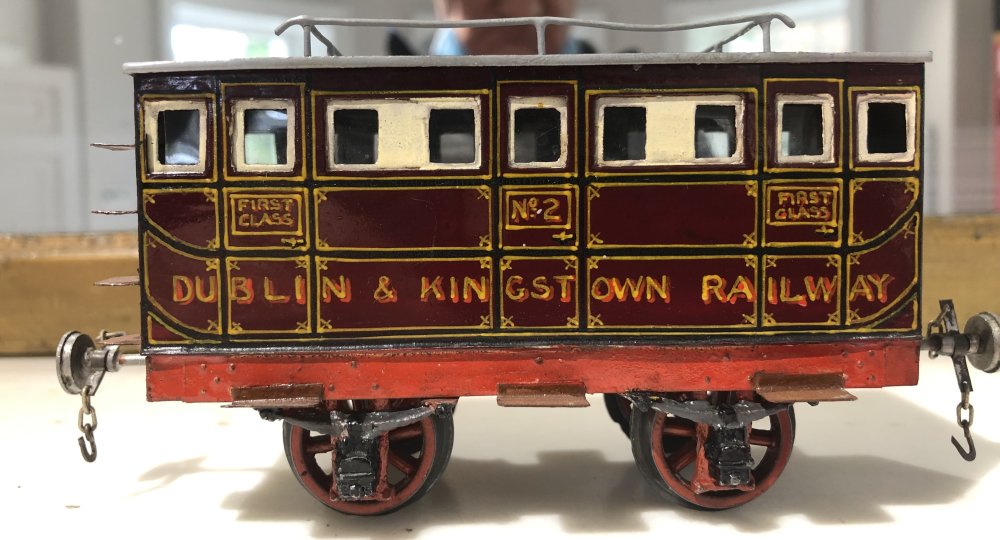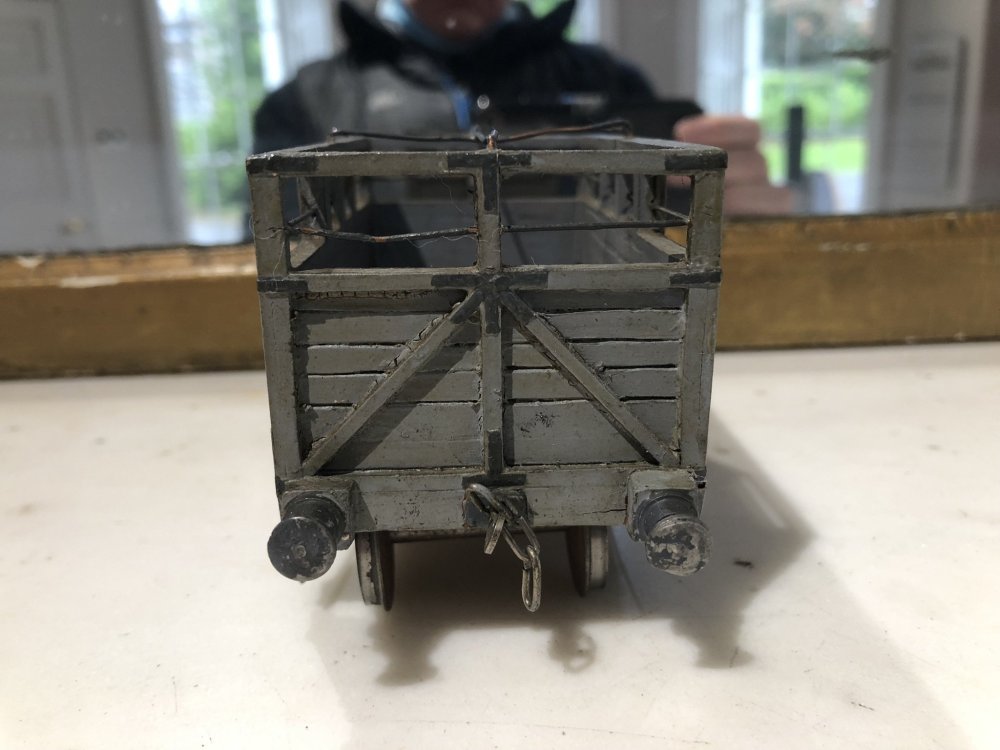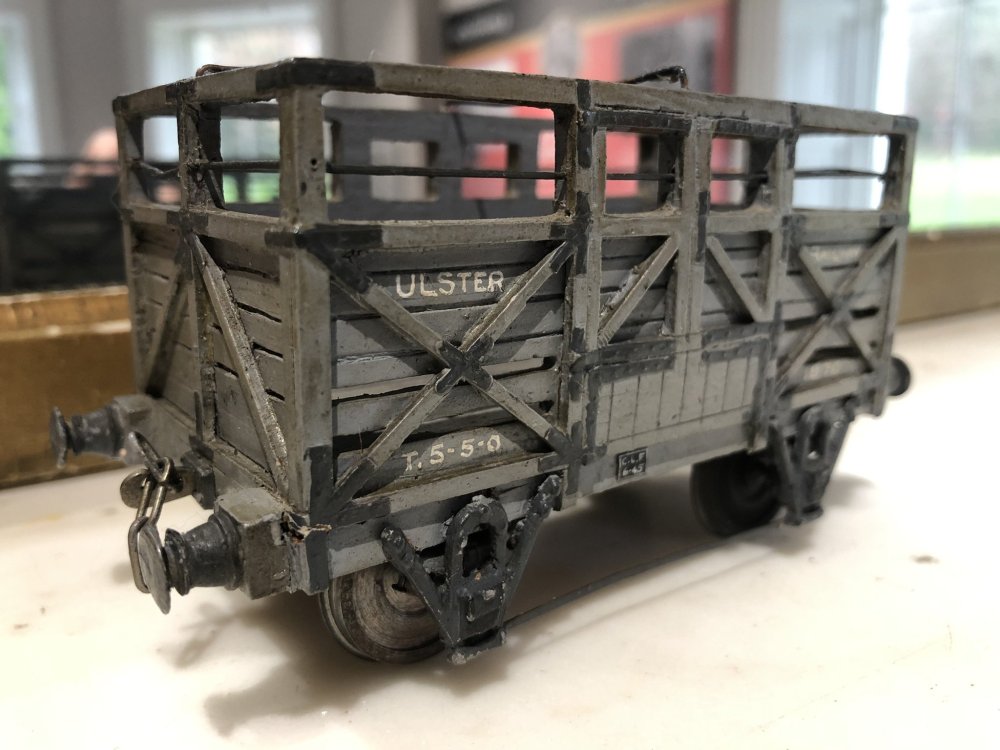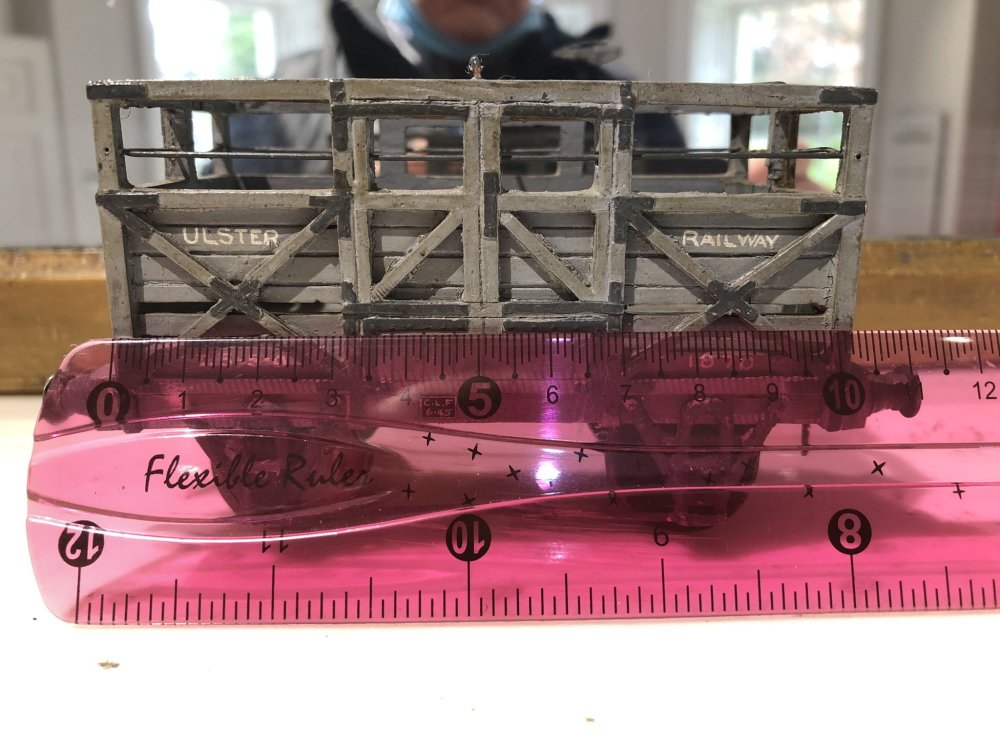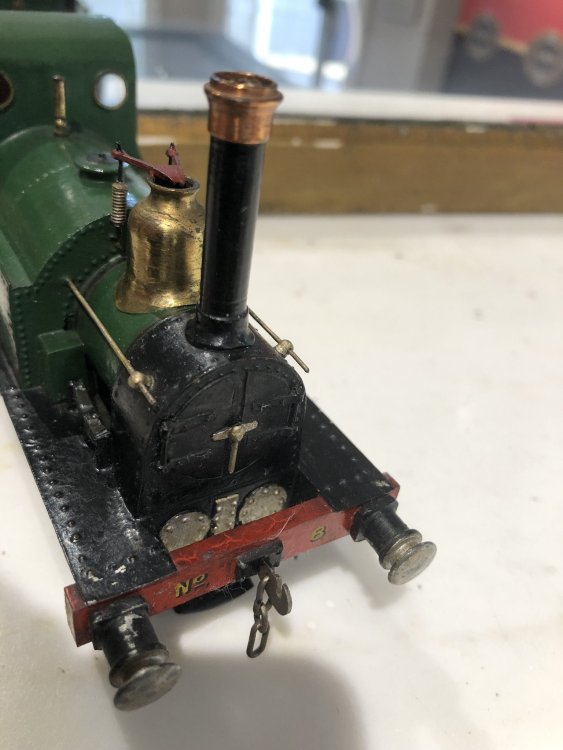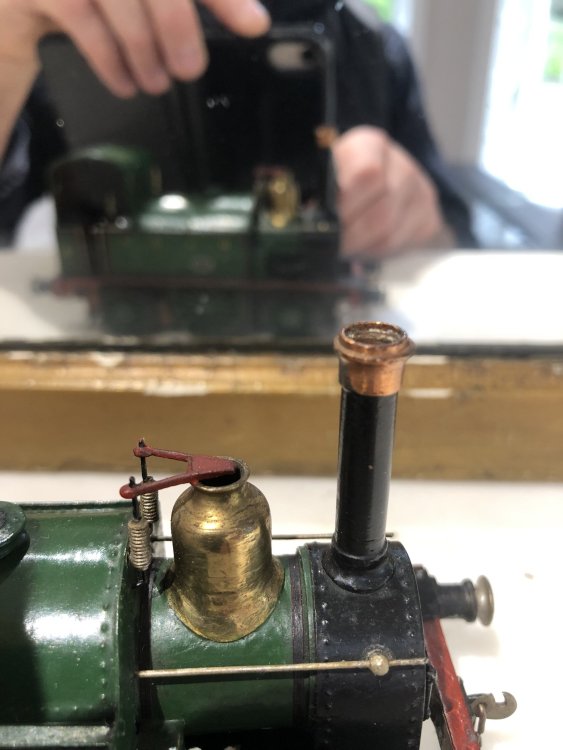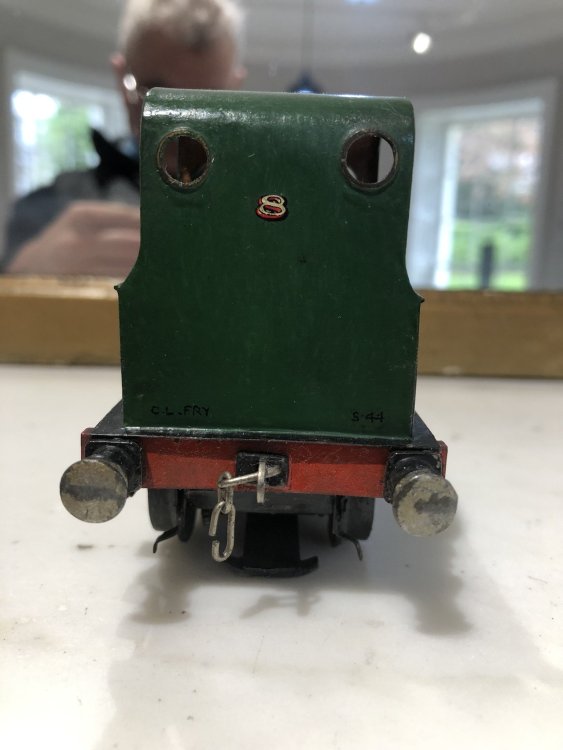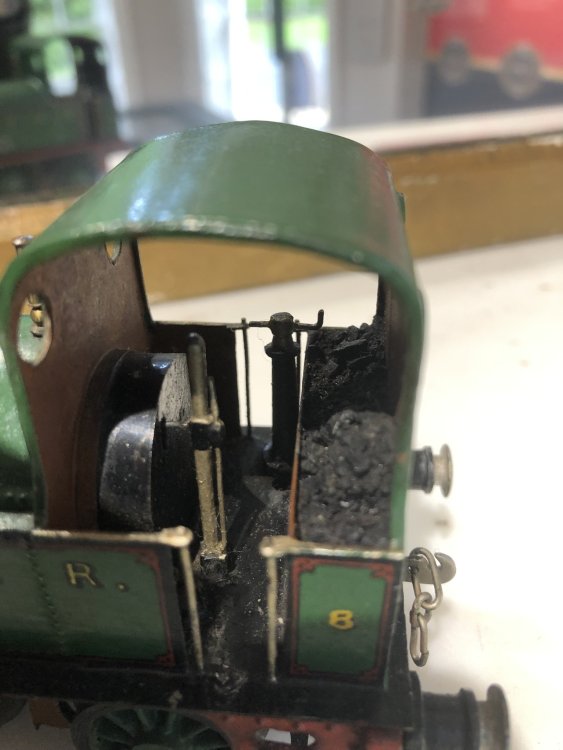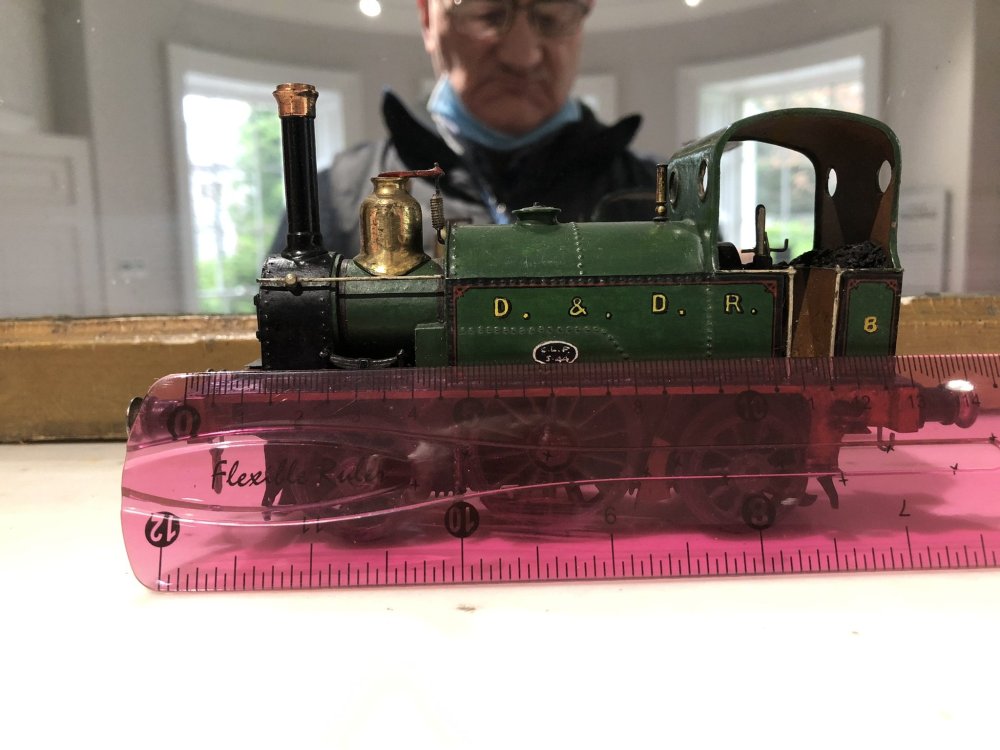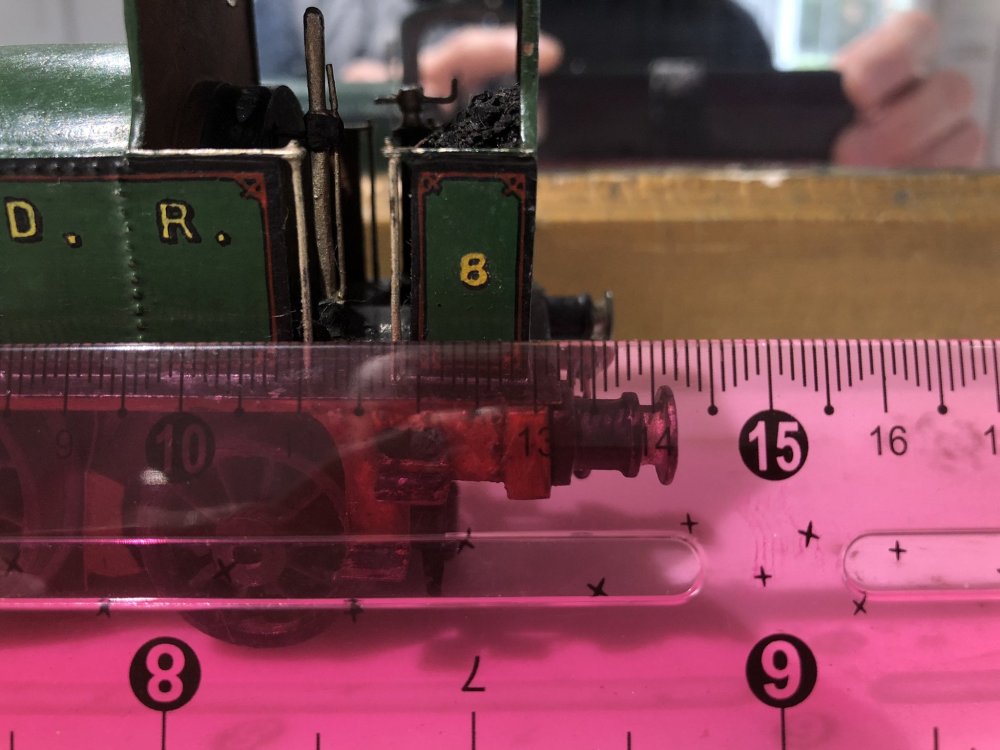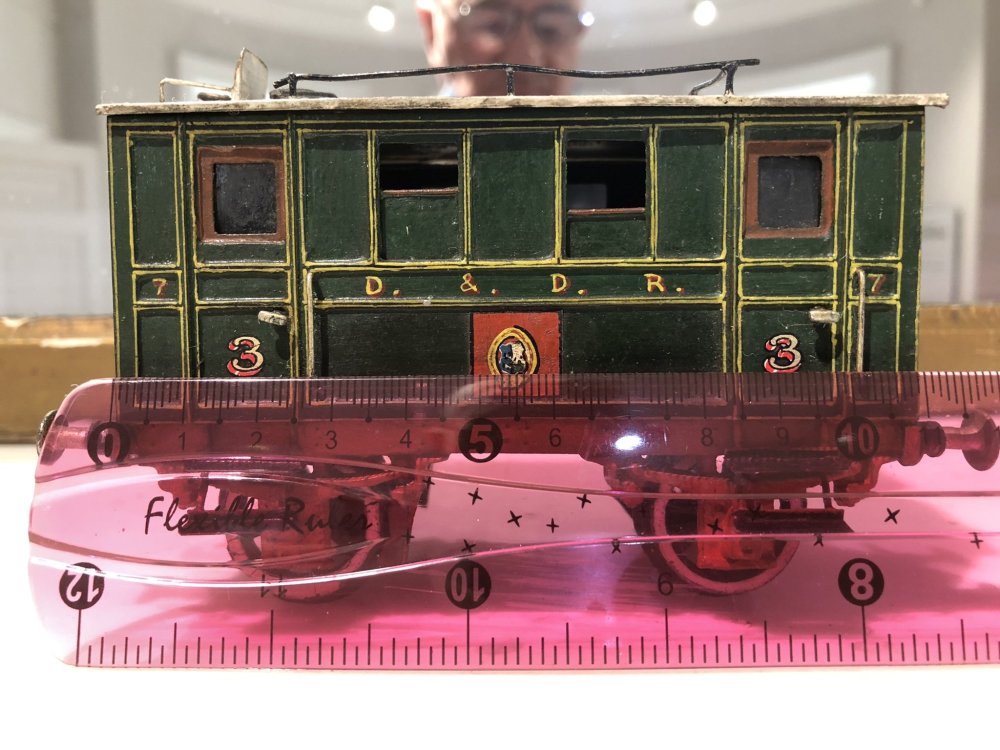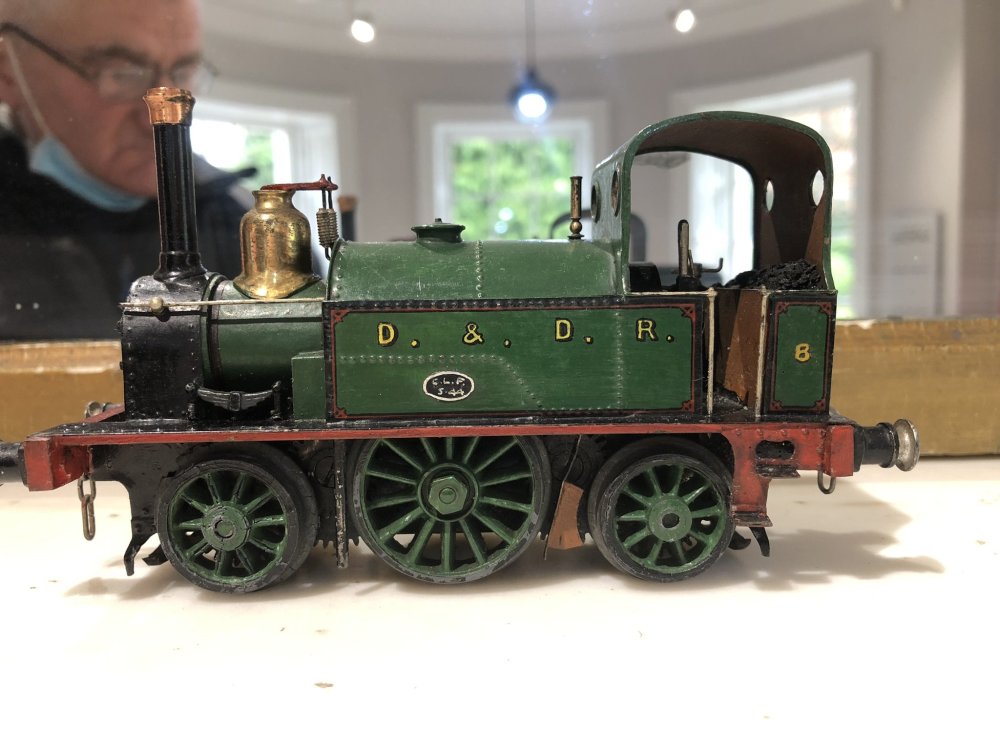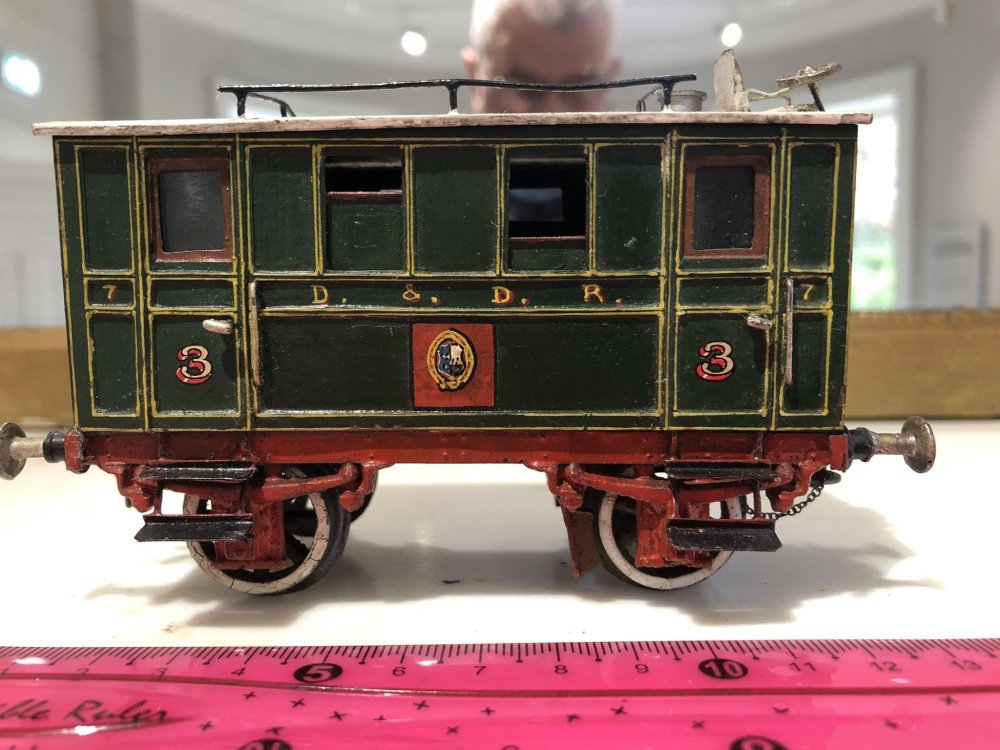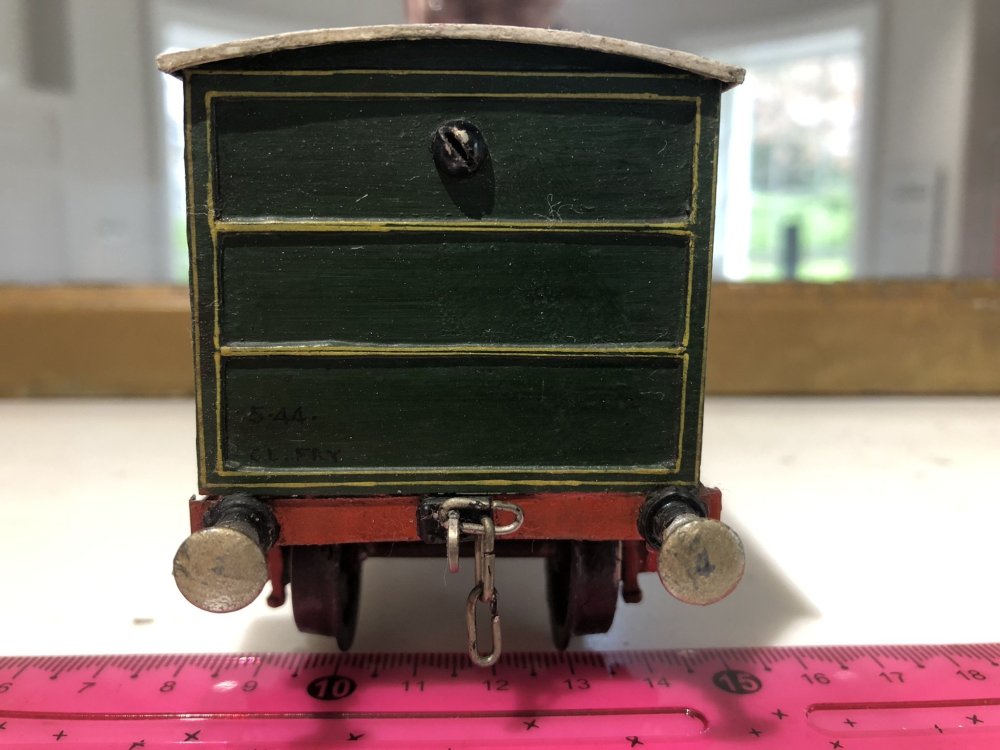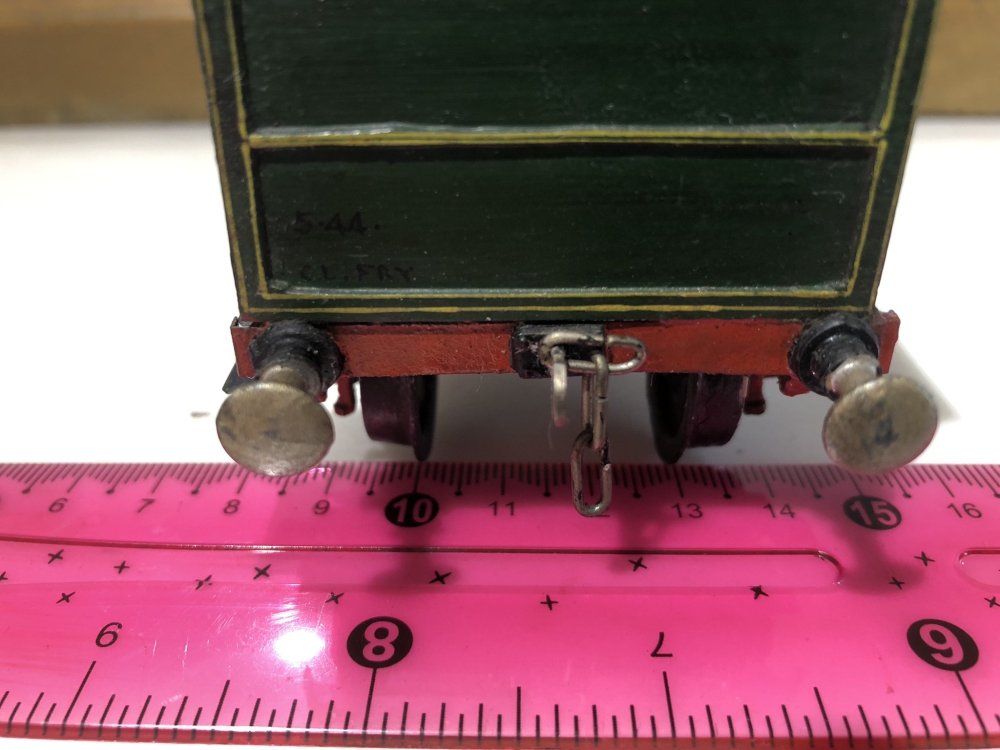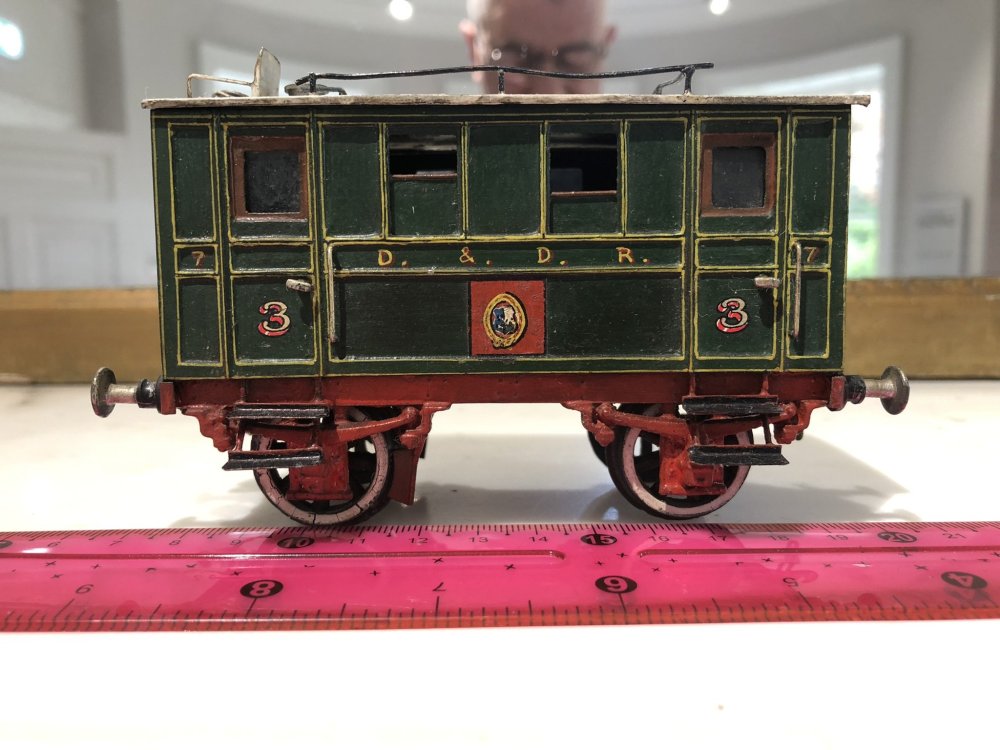The purpose of this article is to provide a brief summary of the types of wooden stock to be seen on the CIE system between 1950 and 1975. I wrote it out, I see, some four years ago, with the intention of posting it here, but I'm not sure if I did. In any event, with "A" class locos and grey 121s about the place now, it's more relevant now than then.
First, a bit of background to the wooden bodied vehicles still very much alive and well into the black’n’tan era, and in a few cases just past the “Supertrain” era. A few wooden bodied bogies of ex-GSWR origin could be seen alongside Mk 2 air-con “Supertrain” coaches for an overlap period of barely 2 years, 1972-4. By 1974, the last use was made of wooden-bodied coaches.
Particularly with younger modellers in mind (to me, that’s anyone under forty!), it is important firstly to bear in mind how the average train on the average railway differed in times past. With the growing popularity of the “grey’n’green era” (1945-62) and the “black’n’tan era” (1962-72), it is easy for those seeking accuracy to try to see the past through the eyes of the present - but the railways were very different then.
Since the “Supertrain era” (1972-87), plus more modern times, it is the norm for a passenger or goods train to comprise a long line of a single type of vehicle. The exact opposite was the case almost from the dawn of the railway age, and by the 1950s any train on any line - goods OR passenger, with a string of identical vehicles, simply didn't happen.
Today, different types of trains have different couplings, different electrics, different corridor gangways (unless IE have sealed them over with tin foil). In the very recent past, EVERY vehicle on EVERY line, originating with EVERY company, had EXACTLY the same couplings. There was no such thing as “you can’t couple this to that” until the 1970s, when we find that Cravens or laminates can’t be mixed with Mk 2’s in traffic as the corridor connections weren’t compatible, and NIR’s 80s and Castles* weren’t compatible unless one was hauling the other dead.
(* They were rarely called “450”s, and absolutely never “thumpers”, when in use!)
So, during the black’n’tan and grey’n’green eras and before, if accuracy is the goal, we need to think about what’s on our layout. Instead of the common theme of trains of a number of identical vehicles – a “rake” of this and a “rake” of that – hauled by a variety of engines, it’s the other way round. Most lines had only one or two different types of loco, but rarely had two wagons or carriages behind them that were the same! So many GSWR branches rarely saw anything but J15s, thus a model would have half a dozen of them and nothing else, but no two carriages alike.
If we look at many layouts, we've a large variety of locos, but uniformity in rolling stock. If even slight accuracy is desired, the opposite should be the case. There were even some branch lines which had virtually the same locos from opening to closure...
Let's look at the bewildering array of carriages types, ages and origins pre-1970, or more so pre-1960.
In 1925 all companies whose lines were entirely within the Irish Free State would amalgamate into the GSR. This excluded lines within the 26 counties which had a cross border element: the LLSR, CDR, SLNCR, DNGR and of course above all the GNR. Some of these companies were small (e.g. the Waterford & Tramore) and had only a few vehicles, whereas the overwhelming majority of the GSR’s coaching stock was previously owned by the DSER, MGWR and GSWR. The distinctive curved-ended stock of the erstwhile WLWR was by now already included in GSWR stock, following their earlier takeover of that concern. The CBSCR had a reasonable stock of elderly relics of their own.
There’s a lot more to the overall story than this, but suffice to say, as far as the modeller is concerned, what was still running in the 1950s onwards is probably of most interest.
Some existing kits can be made to look reasonably like many prototypes – and there’s practically a prototype for everything. Carriages were built in small batches – often, as one-offs or a pair or trio. Take the “Pullmans” for example – they are not known to have ever run in one train, so a “rake” of them, possibly suitable for Britain, was most certainly not the case here. In any event, there were only four. Instead, they’d put one on each of several trains. The rest of the train – anything and everything.
The Midland, like the GSWR, had two distinctive roof profiles, in each case the older “flat” (low curved) and the later “elliptical” (high curved). Each company had a distinct profile for the higher version, the MGWR one being somewhat flatter on top. Window heights and shapes, and door handle designs, gave away the company origin too.
DSER stock had its own window design, but was often characterised by a visibly wider chassis, and a high-pitched curved roof.
The GSWR had a number of designs, with two major changes - one, when bogies started being constructed instead of six-wheelers about 1898, and another between 1903 and 1910, when the higher-elliptical roofs came into being. Since GSWR design was something like many British companies (though with more than enough differences to make them distinctive), it is these plus NCC coaches which lend themselves best to repaints of kitbashing of a number of RTR LMS types made by Hornby or Ratio kits. You might get away with some BCDR designs too. Unfortunately for modellers, there are no British prototypes, either in kit or RTR form, which even remotely resemble anything that ever ran on the SLNCR, MGWR or CBSCR, and a repaint of anything to represent a coach on the BCDR or DSER would require a seven-foot-long "two foot rule", viewed through indifferent eyesight and steamed-up glasses.... You can get away with the NCC very handily by repainting a number of RTR Bachmann or Hornby types over the years, as they were often the same design as LMS types; indeed, when a German gent decided to bomb Belfast, and in doing so obliterated many of the carriage sidings, the LMS actually sent some English coaches over to the NCC.
It is therefore highly convenient that almost all of the late survivors of wooden stock on NIR were of NCC types, and literally all of the last survivors on CIE were GSWR types. The glaring omission in the model world is either a kit or RTR GSWR bogie coach of 1915-25 period.
I haven't mentioned the GNR yet. Again, while the English GNR, though not in any way related to the Irish one, had some design similarities, they were nowhere near close enough to warrant use of a Gresley set on an 00 scale "Bundoran Express" - however, the "two foot rule" can apply under the above circumstances too! Some of the post-1940 GNR stock, plus GSR Bredins, can have a reasonable approximation by suitable repainting of RTR Stanier LMS coaches (ditch the silver roofs, though!), but the older wooden stock, present even in the 1950s "Enterprise" is the issue.
There are, of course, brass kits of a good range of actual GNR(I) types, GSWR six-wheelers and even DNGR stock, but brass kits aren't everyone's cuppa tea.
After CIE took over in 1945, they inherited a motley collection of museum pieces including many one-offs. Apart from the “Bredins” (as we now know them) or “steels” as they were then known, it was basically the same ageing stock inherited twenty years earlier by the GSR. However, from 1951, CIE started building their own stock (very much modelled on the “Bredins” initially) and this led to increasing withdrawal of the older types, the average age of which was now about forty five years. By 1950, most DSER types had been withdrawn.
By 1955, only 19 ex-WLWR vehicles survived. These included the only six bogie vehicles that company ever owned – two each of thirds, composites and brake composites, all 48ft long. That’s 192mm body length in 00 scale. By 1959/60, only 7 were on the books. The distinctive design feature of many W & LR / WLWR vehicles was the curved-in ends, not used by other Irish railway companies, though very common in Britain especially on the Midland Railway & GWR.
PASSENGER CARRYING BOGIE
In traffic 1955
In traffic 1970
GSWR
GSWR (Ex WLWR)
188
6
26
0
MGWR
16
0
DSER
Unknown – few *
0
CBSCR
4 (see note below)
0
* There seems to have been a major “purge” of ex-DSER types by CIE in 1948-50, with many ex-GSWR & MGWR types transferred to the DSE section as well as new stock and Bredins. One DSER dining car was still in use into the early 60s.
PASSENGER CARRYING 6 WHEEL
GSWR
GSWR (Ex WLWR)
82
13
0
0
MGWR
68
0
DSER
Unknown – possibly nil
0
CBSCR
2
0
NON PASSENGER CARRYING BOGIE
GSWR
GSWR (Ex WLWR)
15
0
7 at least, possibly 11
0
MGWR
0 as far as known
0
DSER
0 as far as known
0
CBSCR
0
0
NON PASSENGER CARRYING 6 WHEEL
GSWR
63
1 *
GSWR (Ex WLWR)
0 as far as known
0
MGWR
Some in use but number unknown
0
CBSCR
Possibly 1
0
* This was the last wooden six-wheeled vehicle ever to operate in traffic with CIE. It was No. 79, dating from 1887, withdrawn 1970. The last passenger carrying six-wheeled coaches were withdrawn officially in 1964, but were last actually used in 1963. It is believed that the last ever use of one of these was an ex-MGWR example in which a party of Cork area IRRS members travelled from Glanmire Road to Albert Quay and back in that summer.
Mail vans are not included. Several ex-GSWR mail vans were in use a few years longer in the 1970s.
For the West Cork system, nineteen vehicles were on the books in 1955, though most would be withdrawn in 1957. By 1959 / 60, four remained. Two were six-wheeled, one being of interest in having its origin on the LLSR before it had been converted to narrow gauge. The other two were very short bogies, 37ft and 48ft long. These non-standard products of the West Cork’s workshops at Albert Quay were for the sharply curved Courtmacsherry branch, where such relics lived on because newer coaches were too long for the curves. None ever strayed into the non-CBSCR world, thus models of these are only historically appropriate on a West Cork-based layout.
Almost every Irish company had 30ft as their standard length for six-wheeled coaches, including the GSWR, DSER, WLWR and MGWR. So a 30ft scale chassis would be a good thing to have available even as a kit. That’s 120mm body length. The BCDR was different with several longer variations, and the CBSCR had several shorter versions.
Four wheel coaches, to digress a little, were long gone from almost all Irish lines by around 1900, though the MGWR had some in traffic as late as the early 1920s. These were short, rather than the long-wheelbase ones seen on Ratio kits, or some of the new Hornby "old" carriages. However, the little three-compartment Hornby ones, as sold with "Thomas" sets and the like, while OK length wise, are only appropriate for a layout maybe set in 1880 - for which the coachwork design is too modern. Thus, in an Irish context, even in a reliveried state they are no more like anything that ever ran here as a French TGV is! Similarly, the long-wheelbase four wheelers sold as (very reasonably priced) Ratio (or is it Wills?) plastic kits, would need to be made up as six-wheelers, as none of the railways here ever had long-wheelbase four wheelers at all. (Though, several six-wheelers on, I think, the GSWR, ended up operating with the centre pair of wheels removed!).
Vehicles of ex-GSWR and WLWR origin just had their number inherited from GSWR days. Ex-MGWR carriages had “M” added, thus MGWR No. 124 was now 124M after 1925, while ex-Bandon stock had “B”, and DSER stock “D” after their numbers.
Construction of some of the very first coaches technically introduced by the GSR had been started by the GSWR, and their “architecture” would be continued for several years – thus the very few "pre-Bredin" coaches completed by the GSR are identical in design to GSWR types. Only after the “steels” came in, did a distinct GSR style emerge – very closely like the English LMS, whose lined maroon livery Inchicore would copy almost exactly from about 1933.
Early CIE types introduced 1951-3 would be similar to these “Bredins”, with the later “laminates” built between 1956 and 1959 being developments of these.
And then we’re into the era of the Cravens, and after that it all went downhill fast as we stopped building our own stuff, and started importing standard BR Mk 2 metallic vessels….. The Supertrain era is born! And jhb171achill slips into a coma; too old to hear new chimes, as yer man said.
And they all lived happily ever after. Now finish yer cocoa.
Hope this is of use to someone somewhere!





.png.c363cdf5c3fb7955cd92a55eb6dbbae0.png)


